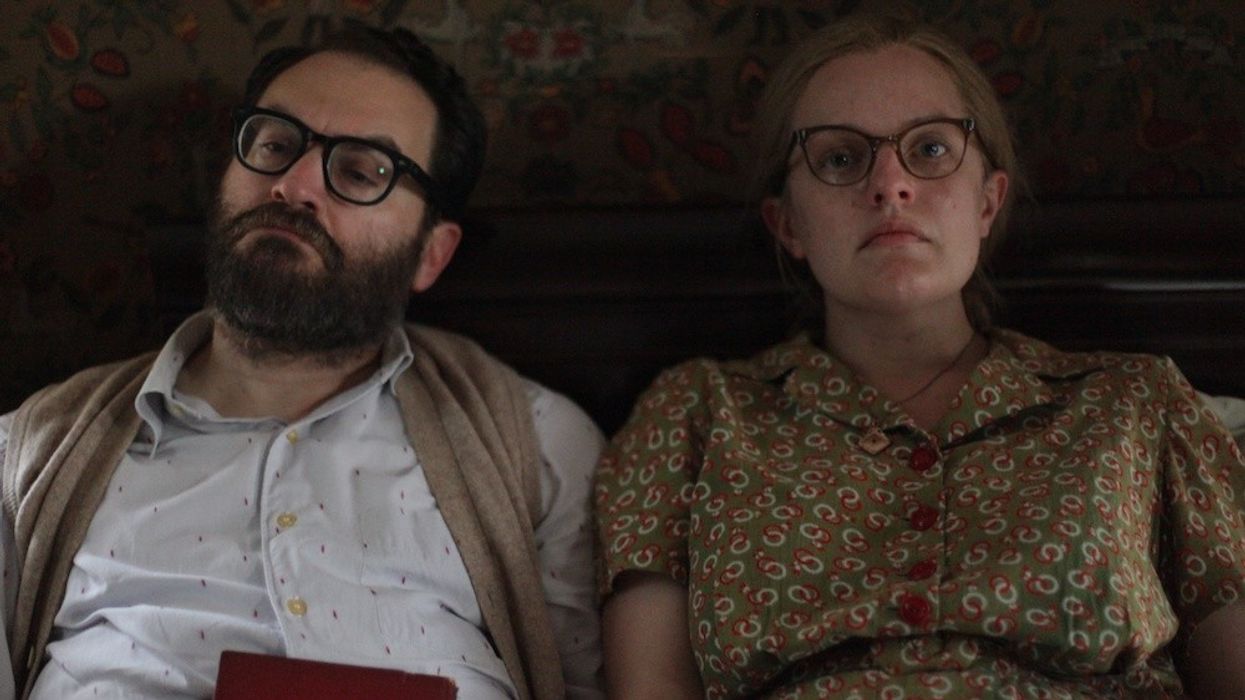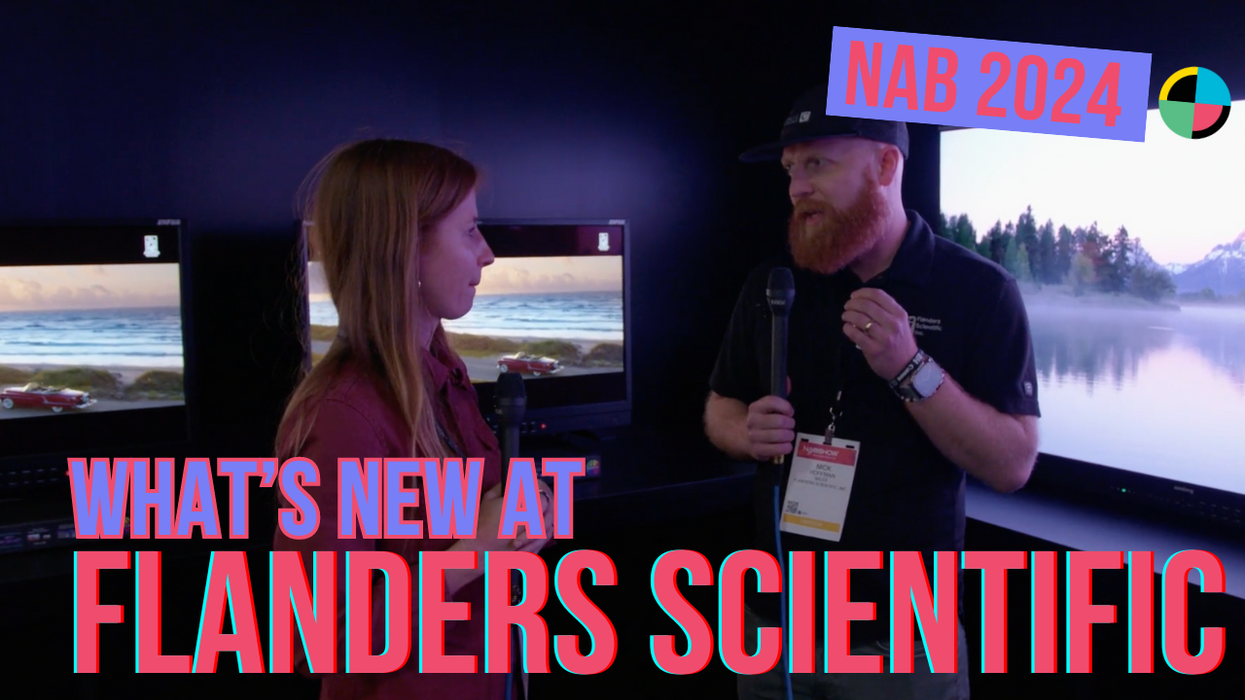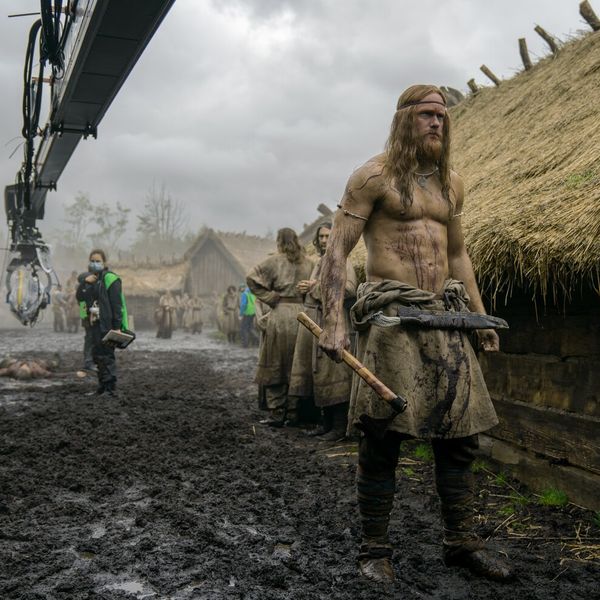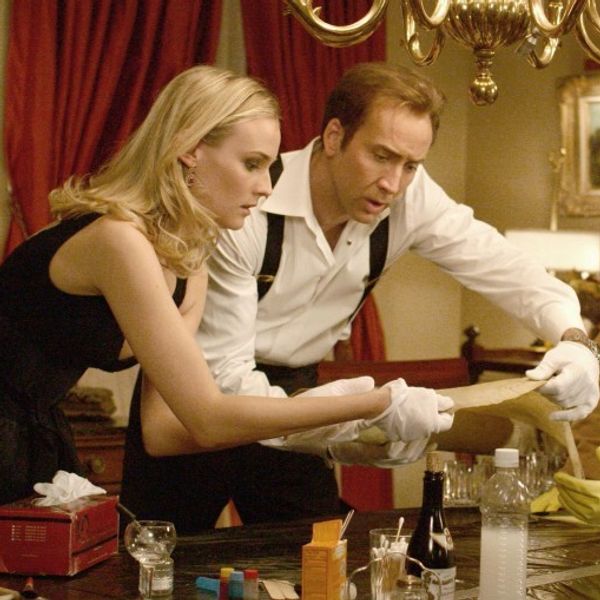Which Cameras and Lenses Were Used on the Films of Sundance 2020 (and Why)?
We know that the ARRI Alexa is a favorite among this year's Oscar-nominated Hollywood filmmakers, but what about the low-budget filmmakers of Sundance 2020?

Welcome to the 2020 Sundance Film Festival! And you know what that means...so many great, risky, and largely unknown films are now descending upon Park City.
And while it's important to dig into the behind-the-scenes production stories and narrative war plans that helped make these indie filmmakers' efforts successful, we also think it's valuable to not only explore the technological side of their films, namely which cameras and lenses they used to bring their movies to life, but also share each filmmaker's reason for choosing the gear they did.
Our very own April Tapley drew up this very slick and handy infographic that breaks down what Sundance filmmakers chose to shoot their films on this year.
Check it out below and then continue on for some valuable filmmaker insight into choosing cameras and lenses.
The Cameras and Lenses of Sundance Film Festival 2020
Why Did They Choose These Cameras and Lenses?
There's no such thing as a "perfect" or "best" camera. Any filmmaker worth their salt will tell you that cameras, lenses, and every other piece of filmmaking gear are just tools used to perform a job, and every job has different needs and requirements.
Maybe your project is under a very strict and very tiny budget. Maybe you're shooting in a lot of small spaces and need something compact and light. Maybe you need a lot of latitude so you can shoot in low-light situations. There are lots of factors that go into choosing gear, but here are (more than) a few reasons these Sundance 2020 filmmakers gave for why they went with the ger they did.
Small Camera Size = More Room for Activities
Whether you're shooting a documentary on a snowcapped mountain or a narrative in your cramped apartment, a small, light, and nimble camera is going to be your best friend.
"My D.O.P Lisabi Fridell shot on an ARRI Alexa Mini, says And Then We Danced writer/director Levan Akin. "We wanted a small camera so that she could more easily catch up with all the dancing!"
Director Zach Kuperstein had to have something light and versatile while shooting The Climb. "We shot with the [ARRI] Alexa Mini and TLS rehoused Cooke Speed Panchros, as well as a Cooke Zoom," he says. "We used the Mini to facilitate all the long oners in the film, and we used the Speed Panchros because they have a nice vintage quality while maintaining sharpness and presence."
Camp Crip directors Nicole Newnham, Jim LeBrecht went with the Sony Fs7 for its portability. "We wanted a camera and lenses that could be shot handheld on the shoulder and give a feel that would integrate with the black and white verite footage of Camp Jened."

Tech Specs That Fit Your Needs
Before choosing your camera, it's so important to take stock of every tech requirement of your production. Are you going to shoot in natural light and/or in the dark with limited lighting? Then you're going to need a camera with enough dynamic range and lenses that are fast enough to let as much light in as possible. Are you shooting in a place without power? Then long battery life is a definite boon. Want more control in post? Then you'll need a camera that has a reliable workflow that you can easily navigate.
Zamo Mkhwanazi, writer/director/producer of Sadla, liked the ARRI Alexa Mini for the flexibility it offered in post, while Relic writer/director Natalie Erika James liked the Alexa XT for its "filmic qualities, its low light capabilities, and reliable workflow."
DP Kenny Suleimanagich says he always intended to shoot Three Deaths on 35mm film, specifically the Moviecam SL MK2 because 3-perf cameras are in high demand, but he went through several tests at Adorama before deciding on his lens package. He says, "Director Jay Dockendorf and I...decided on the Sigmas for their consistent contrast and color as well as speed. I loved the look they gave us for this project...[they] matched the Zeiss Lightweight Zoom, which Jay and I also own." He continues, "Modern lenses also allowed us more image control, and took out variables we couldn’t afford to fix later."
Siempre Luis director John James explains why he paid the RED Epic W 8K camera with Canon and Sigma lenses, "The Epic’s Helium sensor gave us great low light performance, and its resolution allowed for reframing flexibility in post. We needed light, fast lenses, and that is what we got from both the Canon and Sigmas."
Director Kareem Tabsch used the Canon C300 MKII and Canon 5D MK IV to shoot Mucho Mucho Amor for several reasons, but perhaps the most important one being to capture the full, colorful beauty of his subject."Our DP Peter Alon wanted a setup that was light and nimble. Our subject, Walter Mercado was known for his elaborate, colorful costumes and his house is a kaleidescope of colors and textures. It was important for us that the footage had fidelity to the colors that surrounded Walter's world."

The Price is Right
Sometimes it all just comes down to money. Do you have enough money to buy or rent the gear you want? Many times the answer is no. It's important to remember that any camera is better than no camera at all, so your mission is no longer choosing the right one for your project, it's obtaining one...any one.
Broken Orchestra director Charlie Tyrell used Zeiss Ultra Primes in part because a friend loaned them to him for free.
The Killing of Two Lovers director Robert Machoian also made lens choices that fit in with his team's budget, saying, "I wanted to use Cooke's S4 [because they] have been used by a lot of photographers we love, and it was what we could afford with our budget."
The GoGo's DP Sam Painter used a Sony F5 camera and Schneider Xenon Prime lenses because he owned them.
However, director Radu Ciorniciuc used less expensive gear, including the Canon C100 MK II and Canon lenses, to shoot Acasă, My Home for slightly different reasons. "I used fairly affordable and sturdy lenses and cameras because I would often end up in environments that were impossible to be controlled - hence the very high probability to destroy the equipment (which has happened on some occasions)."
You know that old filmmaking axiom "The best camera is the one you have"? Well, Softie director Sam Soko clearly lives and works by it having used a Sony PMW-EX3, a Canon 5D MK III, Sony a7S II, and an iPhone 6s. He told us, "Production in Kenya is an amazing hustle. We honestly could not afford better cameras or lenses. What you get is what you use."

Achieving the Desired Look
Perhaps the most important characteristic of cameras and lenses other than the "record" feature is the aesthetic they produce. For filmmakers who haven't had the privilege of trying out and comparing a wide variety of pro gear, this can be a difficult thing to understand. Like, why do so many filmmakers use the ARRI Alexa? What's the "Cooke look"? Are anamorphic lenses really that cool?
Well, these filmmakers dig into this by explaining why their gear choices worked for them visually.
Director Matt Wolf used a combo of the ARRI Alexa Mini and Cooke Speed Panchro lenses. "We wanted the resolution, but also a vintage look that isn't anamorphic lenses," he explained.
Director Christopher Auchter explains his decision to choose the ARRI Alexa Mini for Now is the Time, "ARRI [Alexa] mini, was used for its ability as a digital camera to capture a look similar to film. It is the way the ARRI camera captures light and not everything it records is 100% crisp. I knew that a great portion of the film would be archival footage that was shot mostly on 35mm film...any new footage and interviews we captured I wanted to at least come close to capturing a look that could fit in with the beautiful 50-year-old footage from 1969 and earlier."
The Nowhere Inn director Bill Benz needed to create two different looks for his "documentary-within-a-movie" so the audience could tell the two apart. He explains, "We shot the documentary handheld on Super 16 with spherical zooms and the larger movie on the [ARRI] Alexa Mini with anamorphic primes (and a handful of zooms). It was important to feel the shift between these two aesthetics as quickly and clearly as possible so it didn't become a confusing distraction."

DP Richard Card used a Sony Venice with Cooke S4is lenses on He's the One, which juxtaposes both Romcom and Horror tropes. Card explains how they pulled this off, "I chose Cooke S4is to represent the Romcom genre. S4is [lenses] have been a staple of comedy and romance films for many years. The Cooke look is a warm and beautifully soft feeling lens, [and] I felt that lensing choice would make the Romcom portions of the film feel that much more authentic." He continues, "We chose spherical lenses to have a closer presence and intimacy with Jessie character, we wanted the audience to be "with" Jessie in every moment of this film."
For Dinner in America, writer/director Adam Carter Rehmeier used a RED Epic-W Helium 8K, but it was the Cooke anamorphic primes that really gave him what he was looking for. "Nothing gives you tasty separation like anamorphic glass. It's real magic. There were a couple key points in the film where Jean-Philippe [cinematographer] and I really wanted to separate the actors from the background to visually keep them in their own world. It allowed us a pipeline to their emotional states and brought the nuances of their performances front and center."
Olla writer/director Ariane Labed shot her movie on Super 16 film for reasons more intangible than great tech specs. "I wanted to shoot in film because it is something that moves me aesthetically but also because it creates a fiction, a transformation. It avoids the "documentary effect". This is more intuitive than logical but I was sure of it. It also creates a beautiful tension on set, knowing that a take is very precious. It transforms our relationship with space and time, just like in theater. I need that as an actor and as a director."

The Breakdown
Now that you have a general idea of the popularity of each brand used by Sundance filmmakers this year, as well as why they chose the gear they did, let's break the data down even more and get specific.
These are the cameras and lenses used by filmmakers who responded to our survey.
A Machine for Viewing
Dir. Oscar Raby, Richard Misek, Charlie Shackleton
Cameras/Lenses: N/A (all found footage and 3D generated content)
Abortion Helpline, This is Lisa
Dir. Barbara Attie, Janet Goldwater, Mike Attie
Cameras/Lenses: Canon C100; Canon 24-105mm lens
Animalia Sum
Dir. Bianca Kennedy & The Swan Collective
Cameras/Lenses: N/A (prerendered 3D and interactive game engine scenes)
Acasă, My Home
Dir. Radu Ciorniciuc
Cameras/Lenses: Canon C100 MKII, C300; Canon 24-105mm F4 and Canon 35mm F2
After The Fallout
Dir. Sam Wolson, Dominic Nahr
Cameras/Lenses: Yi Halo, Google Odyssey, and Insta360 Pro
Aggie
Dir. Catherine Gund
Cameras/Lenses: Sony FS7, Canon C300, Canon 5D MK IV, iPhone X; Canon 24-105mm, 24-70mm, 70-200mm lenses
All That Perishes at the Edge of Land
Dir. Hira Nabi
Cameras/Lenses: Canon 6D, Sony a7S II, GoPro
Amulet
Dir. Romola Garai
Cameras/Lenses: ARRI Alexa; Cooke Speed Panchro, Zeiss lenses
And Then We Danced
Dir. Levan Akin
Cameras/Lenses: ARRI Alexa Mini
Are You Hungry?
Dir. Teemu Niukkanen
Cameras/Lenses: ARRI Alexa Mini; Lomo vintage 20-120mm zoom lens
Atomu
Dir. Shariffa Ali, Yetunde Dada
Cameras/Lenses: N/A (animation)
Black Bear
Dir. Lawrence Michael Levine
Cameras/Lenses: ARRI Alexa Mini; vintage Cooke Panchro lenses
Blast Beat
Dir. Esteban Arango
Cameras/Lenses: RED Helium; Lomo anamorphic lenses
Blocks
Dir. Bridget Moloney
Cameras/Lenses: ARRI Alexa Mini; Arriflex/Zeiss Super Speed Prime lenses
Broken Orchestra
Dir. Charlie Tyrell
Cameras/Lenses: ARRI/Zeiss Ultra Primes
Chomsky vs Chomsky: First Encounter
Dir. Sandra Rodriguez
Cameras/Lenses: N/A (Made with VVVV, or 4V.)
Crip Camp
Dir. Nicole Newnham, Jim LeBrecht
Cameras/Lenses: Sony FS7; Canon CN-E 18-80 Cine Zoom, Canon 70-200mm, 24-105, and Canon Cine Primes
Dance Trail
Dir. Gilles Jobin
Cameras/Lenses: N/A (Unity VR)
Danny's Girl
Dir. Emily Wilson
Cameras/Lenses: ARRI Amira; Angenieux 15-40 and 45-120mm Optimo Zoom lenses
Dinner in America
Dir. Adam Carter Rehmeier
Cameras/Lenses: RED Epic-W Helium 8K; Cooke Anamorphic primes
Disclosure: Trans Lives On Screen
Dir. Sam Feder
Cameras/Lenses: ARRI/Zeiss Master Anamorphic
EXAM (Short film)
Dir. Sonia K. Hadad
Cameras/Lenses: ARRI/Zeiss Master Anamorphic
Eli
Dir. Nate Milton
Cameras/Lenses: N/A (animated)
Farce
Dir. Robin Jensen
Cameras/Lenses: Canon 5D; 50mm lens
Feels Good Man
Dir. Arthur Jones
Cameras/Lenses: Canon C300; Sigma 24-70mm lens (and more)
Flowers & a Switchblade
Dir. Nic Koller
Cameras/Lenses: iPhone
Giving Voice
Dir. Fernando Villena, James D. Stern
Cameras/Lenses: RED cameras
Happy Happy Joy Joy - The Ren & Stimpy Story
Dir. Ron Cicero, Kimo Easterwood
Cameras/Lenses: Canon C300 MK II; Fujinon 19-90mm and 20-120mm lenses
He's the One
Dir. Jessie Kahnweiler
Cameras/Lenses: Sony Venice; Cooke S4/is lenses
Hominidae
Dir. Brian Andrews
Cameras/Lenses: N/A (Vray spherical cameras in Maya)
Hypha
Dir. Sebastian Gonzalez
Cameras/Lenses: N/A (VR)
Impetigore
Dir. Joko Anwar
Cameras/Lenses: Arriflex/Zeiss Super Speed Prime lenses
Into the Deep
Dir. Emma Sullivan
Cameras/Lenses: Canon C100, 5D, 7D, Sony FS7, GoPro, iPhone; Canon EF-S 17-55mm f/2.8 IS, EF 50mm f/1.4
Je finirai en prison (I'll End Up in Jail)
Dir. Alexandre Dostie
Cameras/Lenses: RED Epic Dragon, Cooke Anamorphic Lenses
Jumbo
Dir. Zoe Wittock
Cameras/Lenses: ARRI Alexa; anamorphic lenses
La Leyenda Negra
Dir. Patricia Vidal Delgado
Cameras/Lenses: Canon C500, RED Dragon Pro 5.0; Sigma Cine Primes
La Llorona
Dir. Jayro Bustamante
Cameras/Lenses: ARRI Alexa Mini; Cineovision anamorphic lenses
Laetitia
Dir. Jean Xavier de lestrade
Cameras/Lenses: ARRI Alexa Mini; Cooke Prime S4, Angenieux Optimo 28-76mm, Petzval 58mm and 85mm
Living Distance
Dir. Xin Liu
Cameras/Lenses: N/A (CGI)
Miss Juneteenth
Dir. Channing Godfrey Peoples
Cameras/Lenses: ARRI/Zeiss Master Primes
Mucho Mucho Amor
Dir. Kareem Tabsch
Cameras/Lenses: Canon C300 MK II and 5D MK IV
My Juke-Box
Dir. Florentine Grelier
Cameras/Lenses: Canon 5D MK II; NIKKOR lenses
Natalie Wood: What Remains Behind
Dir. Laurent Bouzereau
Cameras/Lenses: Sony FS7, RED Helium, Panasonic GH5s, DJI Mavic Air; Leica lenses
No, I Don't Want to Dance!
Dir. Andrea Vinciguerra
Cameras/Lenses: Canon 5D Mark III
Now is the Time
Dir. Christopher Auchter
Cameras/Lenses: ARRI Alexa Mini
Olla
Dir. Ariane Labed
Cameras/Lenses: Super 16 film camera
Paola Makes A Wish
Dir. Zhannat Alshanova
Cameras/Lenses: Sony FS5
Rebuilding Paradise
Dir. Ron Howard
Cameras/Lenses: Sony Venice; Cooke S4 Prime Lenses, Canon 17-120 cine servo zoom lens and primes
Regret
Dir. Santiago Menghini
Cameras/Lenses: ARRI/Zeiss Master Primes
Relic
Dir. Natalie Erika James
Cameras/Lenses: ARRI Alexa XT, Alexa Mini; Cooke S4 lenses
Sadla
Dir. Zamo Mkhwanazi
Cameras/Lenses: ARRI Alexa Mini; Cooke Anamorphic lenses
Save Yourselves!
Dir. Alex Fischer, Eleanor Wilson|
Cameras/Lenses: ARRI Alexa Mini; Panavision Primos and Primo zooms
Scare Me
Dir. Josh Ruben
Cameras/Lenses: RED Epic-W Helium; modified Canon FDn Primes
Scarecrow
Dir. Jihyun Jung
Cameras/Lenses: N/A (VR)
Siempre, Luis
Dir. John James
Cameras/Lenses: RED Epic W 8K, DJI Mavic Pro, Sony a7R; Canon L lenses (16-35mm and 25-105mm), Sigma Cine zooms (18-35mm and 50-100mm)
Spaced Out
Dir. Pierre "Pyare" Friquet
Cameras/Lenses: N/A (VR)
Shirley
Dir. Josephine Decker
Cameras/Lenses: Super Baltar lenses, Angenieux Optimo lenses
Softie
Dir. Sam Soko
Cameras/Lenses: Sony PMW-EX3, Canon 5D Mark III, Sony a7S II, and iPhone 6s; Canon 24-70mm, 70-200mm, and Sony 18-135mm
Solastalgia
Dir. Pierre-Alain Giraud
Cameras/Lenses: Kinect Azure
Spaceship Earth
Dir. Matt Wolf
Cameras/Lenses: ARRI Alexa Mini; Cooke Speed Panchro lenses
Spree
Dir. Eugene Kotlyarenko
Cameras/Lenses: 8x GoPro Hero 7's, iPhone X, iPhone Xs, iPhone XR, Samsung Galaxy S8, Sony RX0, Sony FS7, Sony RXO, PatrolEyes DV-5, VanTrue N2 Pro 2.5K, and RED Weapon Helium 8K
Sticker
Dir. Georgi M. Unkovski
Cameras/Lenses: ARRI Alexa Mini; ARRI Ultra Primes
Sylvie's Love
Dir. Eugene Ashe
Cameras/Lenses: Arriflex 416; Cooke Panchros and ARRI Master Primes
The Killing of Two Lovers
Dir. Robert Machoian
Cameras/Lenses: Cooke S4 lenses
The Book of Distance
Dir. Randall Okita
Cameras/Lenses: N/A (Unity VR)
The Climb
Dir. Michael Covino
Cameras/Lenses: ARRI Alexa Mini; TLS rehoused Cooke Speed Panchros
The Deepest Hole
Dir. Matt McCormick
Cameras/Lenses: N/A (animation)
The Devil's Harmony
Dir. Dylan Holmes Williams
Cameras/Lenses: ARRI Alexa Mini; ARRI Master Prime lenses
The Evening Hour
Dir. Braden King
Cameras/Lenses: ARRI Alexa; 1960s SuperBaltar lenses
The GoGo's
Dir. Alison Ellwood
Cameras/Lenses: Sony F5; Schneider Xenon Prime Lenses
The Mountains are a Dream that Call to Me
Dir. Cedric Cheung-Lau
Cameras/Lenses: Arriflex/Zeiss Standard Speeds, Panavision Compact zoom, vintage rehoused Leica R telephoto lens with an optical doubler
The Nowhere Inn
Dir. Bill Benz
Cameras/Lenses: Super16 camera, ARRI Alexa Mini; spherical zooms, anamorphic primes
The Painter and The Thief
Dir. Benjamin Ree
Cameras/Lenses: Sony FS5; Zeiss and Canon lenses
The Reason I Jump
Dir. Jerry Rothwell
Cameras/Lenses: Arriflex/Zeiss Standard Speeds
Three Deaths
Dir. Jay Dockendorf
Cameras/Lenses: Moviecam SL Mk2 3-Perf; Sigma Art Cine Primes, Zeiss LWZ.2 15.5-45mm T2.6
VR Free
Dir. Milad Tangshir
Cameras/Lenses: INSTA 360 Pro 8K VR Camera
Wander Darkly
Dir. Tara Miele
Cameras/Lenses: ARRI Alexa Mini; rehoused Panavision Speed Panchro lenses
We Are Freestyle Love Supreme
Dir. Andrew Fried
|Cameras/Lenses: Canon XL1, Sony Venice, and more
Whirlybird
Dir. Matt Yoka
Cameras/Lenses: ARRI Alexa Mini; Panavision 19-90mm Primo Zoom lens
How Did We Get Here?
Dir. Michelle Miles
Cameras/Lenses: Canon 100mm Macro Lens
What Did We Learn?
Now, as you can easily tell, ARRI cameras, once again, reign supreme not only among Hollywood filmmakers but by independents as well. And lenses, as you might expect, are much more diverse on both big and small budget film sets, though Zeiss and Cooke are almost always the go-to glass.
And that is actually the one thing that sets the Sundance camera and lens data apart from that of the Oscar nominees: diversity...of lenses and cameras (and a few other things).
This year's Oscar filmmakers primarily used the ARRI Alexa, but they also had a huge turnout for film cameras. But that's as far as the variety goes.
This year's Sundance filmmakers, however, used a far wider range of cameras to shoot their films.
We're talking RED Epic. We're talking the Canon C-series, 6D, and even the XL1. We're talking Sony's mirrorless shooters, including the a7S II and a7R II, as well as its beefier cine cameras, like the FS7, Venice, and CineAlta F5. A handful of filmmakers reported to us that they used GoPros and smartphones and 360 cameras.
And yes...40% did use an ARRI camera, mostly the Alexa.
But the main takeaway here is that while Hollywood's expectation, or at the very least, the established industry standard, is for filmmakers to opt for a high-end camera package like the ARRI Alexa, Sundance filmmakers are showing us that it's not a requirement to make a great film that touches people.
For more, see our ongoing list of coverage of the 2020 Sundance Film Festival.
No Film School's podcast and editorial coverage of the 2020 Sundance Film Festival is sponsored by RODE Microphones and SmallHD.



 No Film School's coverage of
No Film School's coverage of 









